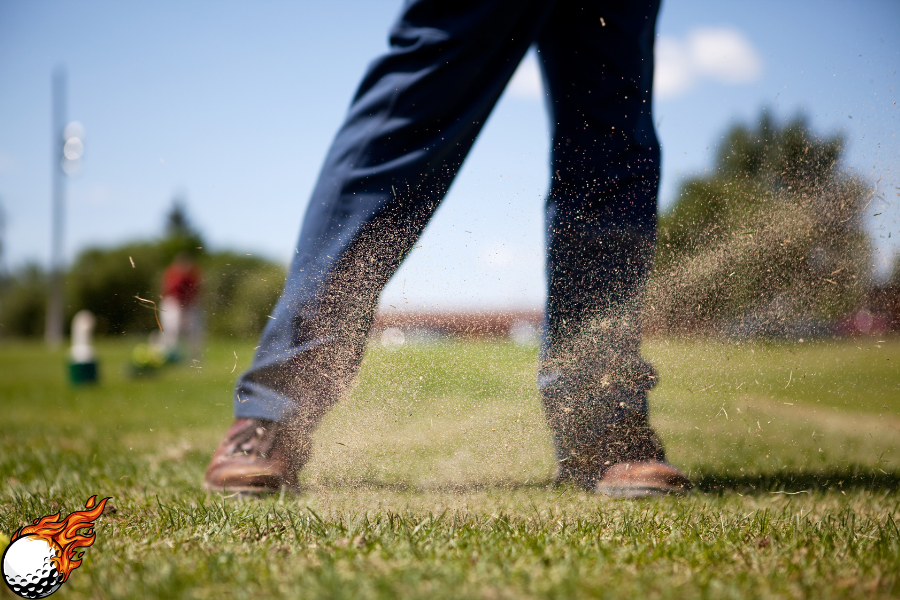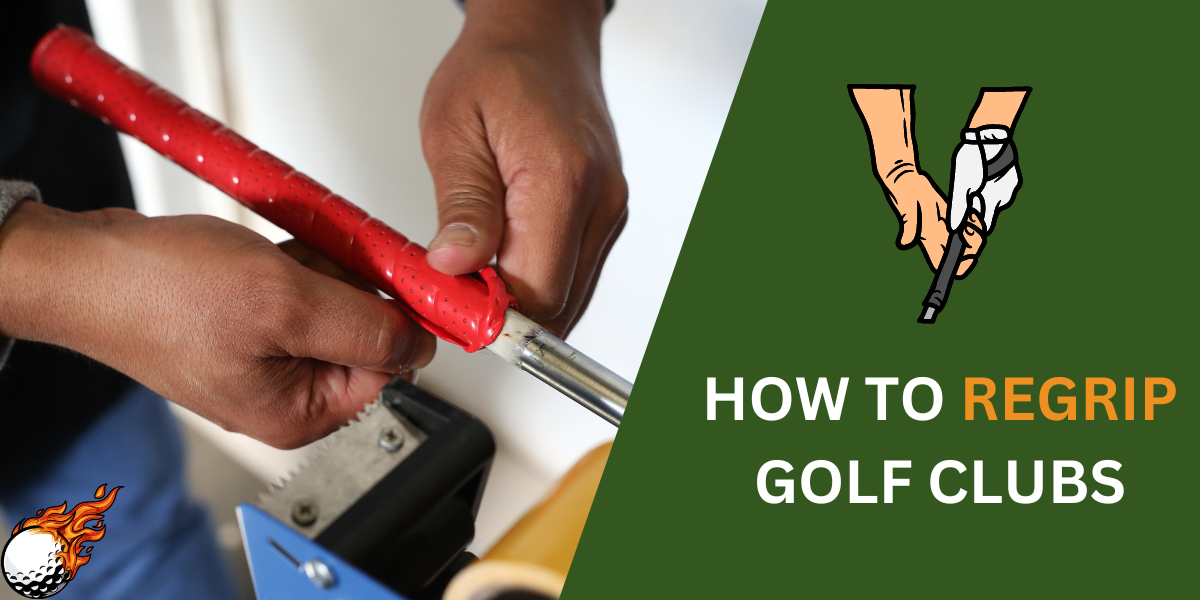
Embarking on your golf journey can feel like navigating an intricate maze. With a myriad of techniques to master and etiquette to learn, where do you even start? Feeling overwhelmed is common among novices, but fear not. The key to unlocking your potential on the green lies within a few strategic Golf Tips for Beginners. This guide is your beacon through the fog, designed to elevate your game from the basics to more nuanced aspects of golf. Whether it’s improving your swing, understanding the course, or refining your strategy, we’ve got you covered.
Many beginners feel lost in the vast world of golf, unsure of how to improve their skills or what practices to adopt.
Without guidance, it’s easy to develop bad habits that can hinder your progress and dampen your enthusiasm for the game.
Our curated list of 47 essential golf tips provides clear, actionable advice tailored for newcomers. By focusing on these key areas, you’ll build a strong foundation, see noticeable improvement, and keep your passion for golf alive and well into 2024 and beyond.
Key Takeaways:
- Build a Solid Foundation: Understand the basics of grip, stance, and posture.
- Practice with Purpose: Learn how to make your practice sessions more effective.
- Course Management Skills: Gain insights on how to navigate the course intelligently.
- Mental Game Mastery: Discover strategies to enhance your focus and confidence on the course.
- Equipment Essentials: Get advice on choosing the right equipment to match your skill level and playing style.
By the end of this guide, you’ll not only have a deeper understanding of the game but also possess the tools and techniques to advance your skills significantly. Let’s dive into these golf tips for beginners and set you on the path to becoming a more confident and skilled golfer in 2024.
What Are the Best Golf Tips for Beginners?
1. Start with the Basics
Understanding Golf: Before diving into the deep end, new golfers should familiarize themselves with the basic rules and etiquette of golf. This foundational knowledge will make your journey in learning golf more enjoyable and respectful towards other players.
2. Invest in the Right Equipment
Choosing Your Golf Bag: For beginners, selecting the right clubs is crucial. Start with a basic set that includes a driver, a putter, a sand wedge, a pitching wedge, and a few irons. This ensures you’re not overwhelmed and can focus on learning how to use different clubs effectively.

3. Master the Grip
Holding the Club Correctly: A proper grip is the cornerstone of a good golf swing. Practice gripping the club in a way that feels comfortable yet firm, allowing you to control the club face better during your swing.
4. Find Your Stance
Feet Shoulder Width Apart: A stable and balanced stance is essential. Stand with your feet shoulder-width apart, knees slightly bent, and weight evenly distributed between both feet to achieve solid shots from the tee box to the green.
5. Perfect Your Swing
Developing a Consistent Golf Swing: The golf swing is a complex movement that requires practice and patience. Focus on maintaining a smooth rhythm and completing your backswing and follow-through for more consistent shots.
6. Focus on the Short Game
Improving Your Short Game: Many golfers overlook the importance of the short game. Spend time practicing chip shots and putts as these can significantly lower your scores and improve your overall game.
7. Practice Regularly
The Importance of Practice Sessions: Consistent practice is key to improvement. Whether it’s at the driving range or practicing putting at home, regular practice sessions will help you refine your skills and build confidence.
8. Learn from Mistakes
Analyzing and Learning from Every Shot: Every shot, good or bad, offers a learning opportunity. Reflect on what went right or wrong and use this feedback to improve your next shot.
9. Stay Patient and Positive
Maintaining a Positive Attitude: Golf can be challenging, especially for beginners. Stay positive, and remember that even the most experienced golfers were beginners at one point.

10. Take Lessons
The Value of Professional Golf Lessons: Even a few lessons with a golf professional can drastically improve your game. They can provide immediate feedback on your swing and offer personalized tips suited to your playing style.
11. Use the Right Ball
Selecting Golf Balls: As a beginner, choose golf balls that offer durability and control. As you progress, you can experiment with balls that provide more spin or distance based on your playing style.
12. Understand Club Selection
Choosing the Right Club for Each Shot: Different situations call for different clubs. Learn how clubs like the sand wedge, pitching wedge, and irons can affect your shot’s trajectory and distance.
13. Play with More Experienced Golfers
Learning from Playing Partners: Playing rounds with golfers who have more experience can be incredibly educational. Observe their techniques and don’t hesitate to ask for advice.
14. Know Your Swing Speed
The Impact of Swing Speed: Your swing speed influences the type of clubs you should use and how you approach each shot. Understanding this can help you make more informed decisions on the course.
15. Keep Your Head Down
The Importance of Focus During the Swing: Keeping your head down and maintaining focus on the ball through your swing helps ensure solid contact and reduces the chances of a bad shot.
16. Follow Through
Completing Your Swing: A full follow-through is crucial for maximizing the power and direction of your shot. Ensure your right shoulder (for right-handed golfers) moves towards the target on the follow-through for more effective shots.
17. Practice with a Purpose
Setting Goals for Practice Sessions: Enter each practice session with specific goals, whether it’s improving your grip, stance, or swing. This focused approach makes practice more effective and rewarding.
18. Watch Professional Golf
Learning from the Pros: Watching professional golfers can provide insights into the game’s strategy, technique, and mental approach. Pay attention to their routine, shot selection, and how they handle pressure.
19. Play on Different Courses
Experiencing Multiple Courses: Playing on various golf courses exposes you to different challenges and conditions. This experience is invaluable for developing adaptability and learning how to approach new situations.
20. Manage Expectations
Setting Realistic Goals: Golf is a challenging sport that takes time to master. Set realistic expectations for your progress and celebrate small victories along the way.
21. Warm-Up Properly
The Importance of a Good Warm-Up: Before hitting the first tee, take the time to warm up with somestretching exercises and practice swings. This not only prepares your muscles for the round but also helps you get into the right mindset for playing.
22. Understand the Course Layout
Navigating the Golf Course: Familiarize yourself with the course layout before your round. Understanding the location of hazards, the shape of the greens, and the best landing areas can help you strategize your shots more effectively.

23. Learn to Read Greens
Mastering the Putting Green: Reading greens correctly can significantly improve your putting game. Pay attention to the slope, grain, and speed of the green to better predict how your ball will move towards the hole.
24. Control Your Emotions
Keeping Your Cool: Golf can be emotionally challenging. Learn to manage frustration and stay calm after a bad shot, focusing instead on how to recover and make the most of your next shot.
25. Use Technology Wisely
Leveraging Golf Tech: Modern technology, like swing analyzers and GPS devices, can provide immediate feedback and valuable data about your game. Use these tools to identify areas for improvement and track your progress.
26. Practice Good Etiquette
Golf Etiquette Matters: Show respect for your playing partners and the course by following proper golf etiquette. This includes repairing divot marks, keeping up with the pace of play, and being mindful of other players’ lines.
27. Stay Hydrated and Nourished
The Role of Hydration and Nutrition: Maintaining energy levels and hydration is crucial, especially during longer rounds. Drink plenty of water and have healthy snacks to keep your energy up from the first tee to the 18th green.
28. Know When to Use a Tee
The Right Time to Tee Up: Not just for the initial drive, teeing up is also allowed when playing from the designated tee box of a par-3 hole. Using a tee can help achieve more lift and distance on your shot.
29. Keep Your Clubs Clean
The Importance of Clean Clubs: Dirty club faces can affect the ball’s flight and spin. Regularly clean your clubs to ensure the grooves are free of dirt and grass, which can help improve your accuracy and control.
30. Don’t Neglect Your Grip Strength
Strengthening Your Grip: A strong grip can improve your control over the club and the consistency of your shots. Consider incorporating grip-strengthening exercises into your routine.
31. Align Your Body Correctly
Body Alignment Tips: Ensure your feet, hips, and shoulders are aligned with your target line. Proper alignment is crucial for hitting the ball accurately and consistently in the desired direction.
32. Prioritize Safety
Safety on the Course: Always be aware of your surroundings and follow safety guidelines, such as not swinging your club when someone is standing close by and shouting “fore” if your ball heads towards other players.
33. Use a Sand Wedge for Bunkers
Escaping Greenside Bunkers: A sand wedge is designed specifically for getting out of bunkers. Its wide sole helps the club glide through the sand and lift the ball out more easily.
34. Adjust Your Stance for Different Shots
Stance Variability: Learn how adjusting your stance can affect your shots. For example, widening your stance can add stability for power shots, while narrowing it can help with precision on shorter shots.
35. Visualize Your Shots
The Power of Visualization: Before each shot, take a moment to visualize the ball’s flight path and where you want it to land. This mental preparation can help improve your focus and execution.

36. Keep Learning
Continuous Learning: The learning never stops in golf. Read books, watch tutorials, and stay open to tips and advice from more experienced players. Continuous learning is key to improving your game.
37. Don’t Rush Your Shots
Taking Your Time: Rushing can lead to mistakes. Take your time to set up each shot properly, focusing on your target and the shot you need to make. A deliberate approach often leads to better results.
38. Know the Different Types of Wedges
Wedge Knowledge: Apart from the sand wedge, familiarize yourself with other types of wedges like the pitching wedge and lob wedge. Each has its unique use, especially around the greens for chip shots and pitch shots.
39. Understand the Wind
Playing With the Wind: Wind can significantly affect your ball’s flight. Learn to adjust your shots based on wind direction and speed, choosing the right club and shot type to counteract the wind’s effect.
40. Develop a Pre-Shot Routine
The Importance of a Routine: A consistent pre-shot routine helps settle your nerves and prepares you mentally and physically for the shot. It can include visualizing the shot, taking practice swings, and setting your stance.
41. Experiment with Different Clubs
Finding the Right Club for You: Each golfer has unique preferences and swing characteristics. Don’t be afraid to experiment with different clubs to find which ones best suit your game, including trying out various woods, irons, and hybrids.
42. Learn the Art of Recovery
Turning a Bad Shot into an Opportunity: Not every shot will go as planned. Learning how to recover from a bad shot or a challenging position on the course is crucial. This includes knowing when to play it safe and when to take a risk.
43. Understand Course Management
Strategic Playing Decisions: Good course management involves making smart decisions about which club to use, where to aim, and how to approach each hole. This strategic thinking can save you strokes and help you avoid unnecessary trouble.
44. Prioritize Accuracy Over Distance
Accuracy vs. Distance: For beginners, focusing on hitting the ball straight can be more beneficial than trying to achieve maximum distance. Accuracy leads to more playable second shots and lower scores.
45. Keep Your Eye on the Ball
Maintaining Focus: It sounds simple, but keeping your eye on the ball throughout the swing is vital for making solid contact. Resist the urge to look up too early to see where the ball goes.
46. Practice Patience on the Putting Green
Mastering Putting Patience: Putting requires precision and patience. Spend significant time on the putting green practicing from various distances. This will help you get a feel for the speed of the greens and improve your accuracy.
47. Enjoy the Game
Remembering Why You Play: Golf is a game meant to be enjoyed. While it’s great to be competitive and strive for improvement, don’t forget to have fun and appreciate the opportunity to play, whether you’re on a public course or a private one.
Incorporating these 47 essential golf tips for beginners into your practice and play can transform your approach to the game, helping you build confidence, skill, and a deeper enjoyment of golf. Whether it’s mastering the golf swing, selecting the right golf ball, or navigating the golf course with strategic insight, each tip offers a stepping stone towards becoming a more competent and fulfilled golfer. Remember, the journey of learning to play golf is a marathon, not a sprint. Embrace each round, learn from your experiences, and enjoy the continuous process of improvement. Golf is a game that offers endless opportunities for growth, camaraderie, and enjoyment, making it a rewarding pursuit for anyone willing to take up the challenge.
Why Beginner Golfers Need Guidance
Embarking on the journey of golf can be both exhilarating and daunting for a new golfer. The quest to consistently hit the sweet spot, master the grip of the left hand, position the front foot correctly, and choose the right golf club requires more than just practice; it necessitates proper guidance. Without it, the nuances of developing a successful golf game can feel overwhelming. For beginners, understanding these fundamental aspects is crucial not only for improving their skills but also for fostering a lasting love for the game. Guidance helps in translating the complex language of golf into actionable insights, ensuring that the basics become second nature. This foundation paves the way for a rewarding journey through the golfing landscape, turning challenges into milestones of achievement and satisfaction.
When Is the Best Time for Kids to Start Their Golfing Journey?

Introducing children to golf at an early age can ignite a lifelong passion for the sport. The best time to start is when their curiosity peaks, typically between the ages of six to nine. At this stage, their golf swing can be molded, and the excitement of hitting a golf ball with a golf club becomes a fun activity rather than a chore. Starting on a driving range, kids can experiment without the pressure of a full game, learning to hit a hero ball or simply practicing their swing. Guidance on holding the club correctly, understanding the club face, and navigating the putting green are foundational skills that amateur golfers of all ages benefit from. Resources like Golf Digest often highlight the advantages of early exposure to the sport, including improved coordination and discipline. Introducing golf through playful exploration on a private course or public putting green makes the learning process enjoyable, setting the stage for a lifelong appreciation of the game.
Final Thoughts
Mastering the golf swing is a journey filled with highs and lows, from the triumphant hero ball to the humbling bad shot. For new golfers, the driving range serves as a sanctuary for experimentation, a place where the pursuit of the perfect swing becomes a quest for personal bests. Golf Digest and other resources echo a common sentiment: to learn golf effectively, embracing the modern fundamentals is crucial. This includes understanding the role of different clubs, from the precision of a sand wedge to the power of the longest clubs. Tee time aggregators have made accessing the game easier, allowing golfers to explore various courses and challenges. Yet, the journey is punctuated with learning moments, such as repairing a divot with a divot tool, a small but significant act of respect for the course and fellow players. Most golfers will agree, the path to improvement is paved with persistence, patience, and a willingness to embrace each lesson the game offers.
Frequently Asked Questions
What are the best golf tips for beginners to improve their swing?
Focus on mastering the fundamentals: ensure a proper grip, maintain a stable stance, and keep your eyes on the ball through the swing. Practice consistently at the driving range, and consider taking lessons from a professional to get personalized feedback and adjustments.
How can a beginner choose the right golf clubs?
Beginners should look for clubs that offer forgiveness on off-center hits. A basic set typically includes a driver, a few irons (usually the 7, 8, 9 irons), at least one wedge, and a putter. Lightweight clubs with larger clubhead sizes are ideal for starters to enhance their game.
What is the importance of the golf ball for beginners?
For beginners, the choice of golf ball can impact learning and performance. Opt for two-piece golf balls that offer more distance and durability. These balls are designed to provide maximum forgiveness, helping beginners to achieve better results as they refine their swing.
How often should beginners practice golf to see improvement?
Consistency is key. Beginners should aim to practice at least 2-3 times a week. Mixing up practice sessions between the driving range for long game improvement and the putting green for short game skills will lead to more balanced progress.
What are some common mistakes beginner golfers should avoid?
Avoid the temptation to only focus on power; accuracy and technique are more important. Neglecting the short game (putting and chipping) is another common mistake. Finally, not taking lessons from a professional early on can lead to the development of bad habits that are hard to break.












